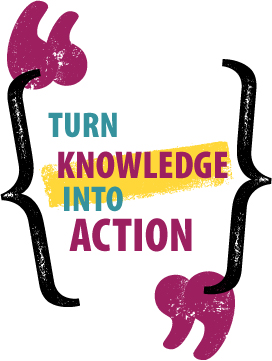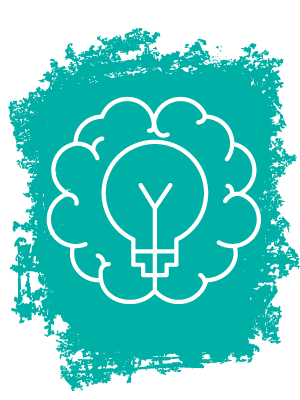
Family Engagement
Family Engagement is a key component to the career counseling process for students with significant disabilities. Getting parents, family members, and other people who care about and support a persons' work and living goals can have a huge impact on successful outcomes.
Strong family engagement happens when families have a primary and meaningful role in all decision-making that impacts every young person and their families. Meaningful family engagement is about improving outcomes for all youth and families.
Families should be active participants in the transition process between school and community involvement. Youth with parents who have high expectations of them have a greater chance of success and achievement when pursuing education, employment, financial independence, and independent living goals. (1)
Promising Practices for Family Engagement
Use promising practices to foster supportive and trusting relationships between yourself and families. Elements that support family engagement include:
Family-Centered Practice
Commit to family-centered practices that demonstrate respect and give families control over their services. More about Family-Centered Practices >
Contact
Take the time needed to make progress toward goals when meeting with families and all of their supports.
Communication
Set a foundation for building trust by communicating clearly, honestly, and respectfully with families.
Concrete Services
Help to facilitate the provision of concrete services that meet families’ immediate needs for food, housing, child care, transportation, and other costs.
Individualized Service Plans
Create individualized service plans that expand on traditional service packages to respond to parents’ needs, specific circumstances, and available supports.
Strengths-Based Approach
Recognize and reinforce the capabilities of families, not just their needs and problems.
Shared Decision-Making and Participatory Planning
Mutually agree on goals and plans that reflect the service provider’s professional training and the family’s knowledge of their own situation.
Broad-Based Involvement
Create a web of support for parents, extended family members, informal networks, and community representatives that promotes safety, increases permanency options, and provides links to needed services.
Foster and Adoptive Parent Resources
Recognize foster and adoptive parents as resources for children and youth in their care.
Parent Praise and Recognition
Praise and recognize parents who are making life changes resulting in safe and permanent living situations for their children.
Confidentiality
Understand the role of confidentiality and how to involve partners in case planning in a way that is respectful of the family and enables partners to create realistic plans.
Strategies
Be Culturally Aware
“Family” means different things to different people. A youth’s understanding of family is influenced by their personal history and cultural background. Family could include any combination of biological parents, adoptive or foster parents, siblings, or other caring adults.
When engaging with families, be open to understanding what family means to them and what impact that understanding could have on goal-setting and decision-making.
Resources:
- Closing the Gap: Cultural Perspectives on Family-Driven Care
- Improving Cultural Competence, SAMHSA
- Cultural Competence Training, You for Youth
Engage Families in Transition Planning
Youth with disabilities may not have as many opportunities to explore their interests, skills, and abilities and work toward setting career goals. Their family could give them the extra support and encouragement they need.
Best practices when working with youth and their families:
- Encourage parents to have high expectations of their child that build upon their child’s strengths, interests, and needs
- Offer information about work’s potential impact on social security benefits, medical coverage, and work incentive benefits counseling services
- Teach parents how to learn about their child’s strengths, needs, values, and interests
- Provide family advocacy skills training
- Connect youth to self-advocacy training or opportunities to build self-advocacy skills at home
- Provide information and resources for financial planning for post-secondary education
- Connect families and youth with disability services at post-secondary educational institutions
- Give information on how to talk with youth about career planning
Encourage families to take an active role in transition planning. This could look like:
- Remaining involved in their child’s life and assisting them toward adulthood
- with their child about potential employment, further education, and community resources
- Connecting with medical/health supports, professional, and peer support networks
- Promoting their child’s independence by encouraging them to be more involved in decision making and responsibilities
What information and resources do families need to empower their youth?
- An understanding of the youth’s disability and how it may affect their education, employment, and daily living options
- Knowledge of rights and responsibilities under various disability-related legislation
- Knowledge of and access to programs, services, supports, and accommodations available for young people with disabilities
- An understanding of how individualized planning tools can assist youth in achieving transition goals and objectives
Sources:
- Career Counseling for Students with Disabilities: Strategies for Success [PDF] | [VIDEO]
- Guideposts for Success: Key educational and career development interventions that make a positive difference in the lives of all youth, including youth with disabilities.
Tools
Following are some tools and resources to learn even more about this topic.
Featured Resources

PACER Center
A parent training and information center for families of children and youth with all disabilities from birth through 21 years old. PACER Center Website
More Resources
- The Department of Labor-Family Involvement and Supports
- Federal Resources for Stakeholders
- National Resources for Parents of Children and Youth with Disabilities
- Harvard Family Research Project on Family Engagement with Children with Disabilities [PDF]
- Podcasts on Strategies to Build Family and Youth Engagement from The National Center for Youth Opportunity and Justice (NCYOJ)
- Strategies for Engaging Families at the Practice Level [PDF]
Sources
1 Kirby, A.V., Dell’Armo, K., & Persch, A.C. (2019). Differences in youth and parent postsecondary expectations for youth with disabilities. Journal of Vocational Rehabilitation, 51, 77-86





